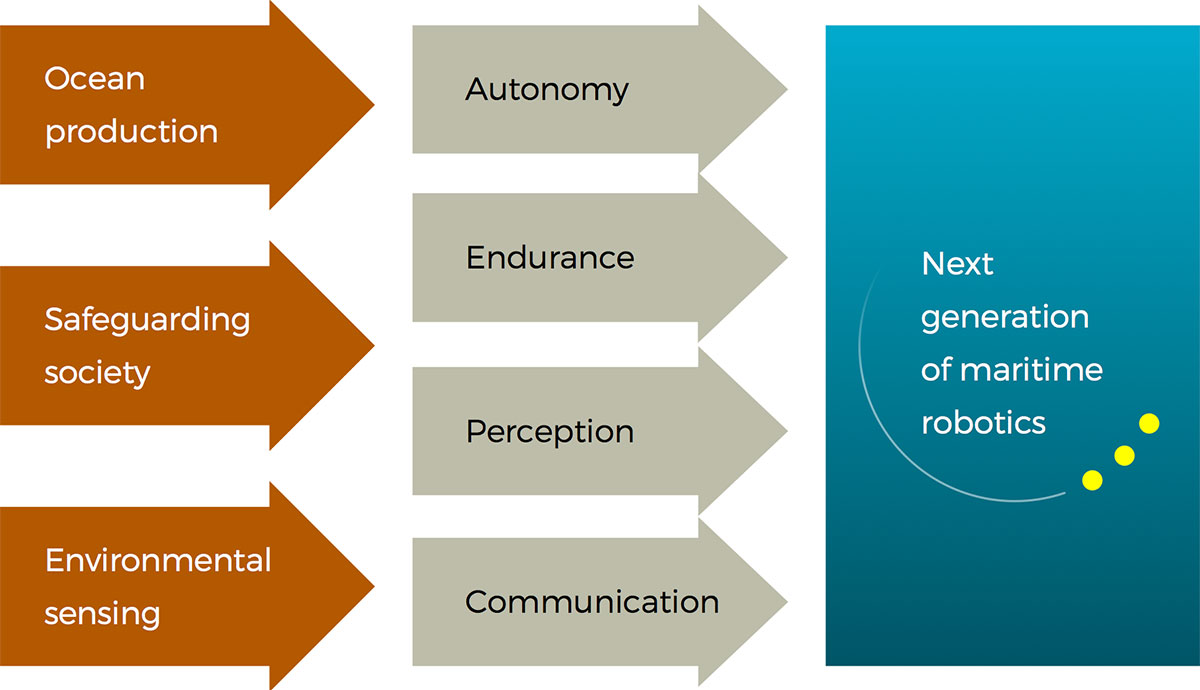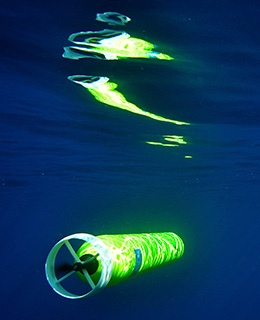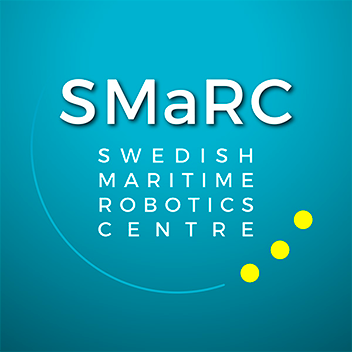Next generation of maritime robotics
The future maritime robots will change the underwater domain the same way that satellites did for space exploration. Increased presence and coverage in the oceans – with reduced human interaction – is the key forward. However, to accomplish this goal, underwater systems need to:
- be simple to handle and more robust
- require less (costly) assistance from divers and support vessels
- execute more complex missions, with increased endurance and range in unknown waters
Research disciplines
SMaRC’s primary objective is to raise the total system performance of unmanned maritime robots. This requires a holistic approach where close collaboration between several engineering disciplines is of critical importance. Thus, to achieve strong collaborations and synergies, SMaRC research is organized around the following areas rather than around traditional research groups:
- Autonomy – the ability to adapt actions based on sensed data
- Endurance – the ability to stay on mission for a prolonged period of time
- Perception – the “eyes and ears” of the maritime robotics, not only for mission-related tasks but also for navigation
- Communication – the notion of sending and receiving data, typically under extremely challenging circumstances
Two types of robots
To facilitate the integration of the interdisciplinary results, SMaRC has developed demonstrators, with which autonomy, endurance perception and communication has been tested in ocean environment. Two types of robots are:
- Long-range and Long-endurance maritime robots
- Small-size and affordable maritime robots


